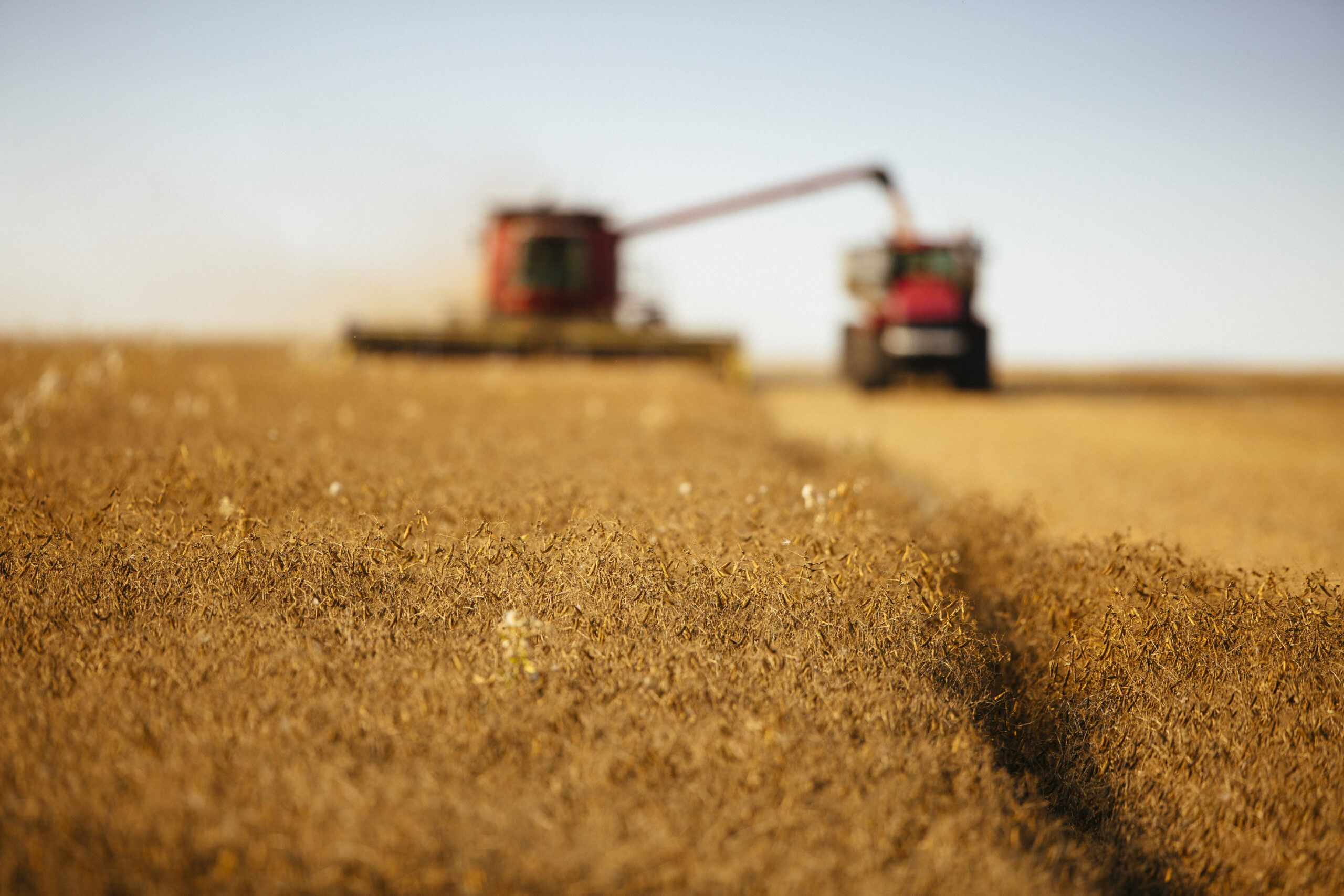Adapted from Donna Fleury, P.Ag.
Quality Matters
Pests such as insects, diseases, and weeds can impact grades. Insects such as grasshoppers and lady bugs can remain in the sample and cause downgrading due to presence of insect parts, seed staining, and earth-tag. Earth-tag may occur during combining when moisture from weeds, green pea material, or heavy dew causes soil or dust to stick to the seed. Earth-tag is considered when the colour is evaluated and moderate amounts can drop the colour classification to “Fair” which can drop the grade from a No. 1 to a No. 2 or lower.
Diseases can affect seed quality as well as show up as contaminants in the sample. Diseased areas on seed can show up as seed staining which can affect the colour and grade. Pink peas can also show up at harvest time and are a result of infection by bacteria Erwinia Rhapontici. The pink colouring is considered in the overall colour assessment and if the colour extends into the cotyledons, the sample may be considered damaged. With Sclerotinia white mould there can be contamination of the harvest samples with the black sclerotia bodies which can also cause downgrading.
Another factor that can affect quality is bleaching. The Canadian Grain Commission considers green peas to be bleached if one-eighth or more of the surface of the cotyledon is bleached to a distinct yellow colour, which is marked contrast to its natural colour. Bleaching applies to green peas only. To obtain top No. 1 Grade green peas the sample must have 2% bleached or lower. At this level only two seeds per 100 seeds can be bleached.
Swathing or Direct Combining Peas
Pea plants mature from the bottom to the top, and are near maturity when the bottom pods are ripe with seeds dry and detached from the pod, the middle pods and seeds are yellow-coloured, and the upper seeds are firm with the pods wrinkled and turning yellow. 80% of the plant will be yellow to brown in colour. At this stage the crop is considered less than 30% seed moisture which is appropriate for swathing or use of harvest aids.
Peas can be swathed prior to full maturity or straight combined at full maturity. However, to preserve green colour, green peas are usually swathed or desiccated and combined as soon as possible before bleaching occurs.
If straight cutting is planned, desiccation or pre-harvest applications at the right stage of maturity may be necessary. Follow label directions and apply the products when the crop is less than 30% seed moisture across the entire field. If you do not, it can affect residue levels in the seed, seed quality, and yields. Under warm dry conditions, a desiccant like diquat works quickly and within 4-8 days, the crop may be ready for combining. If using a straight cut header, it should be equipped with vine lifters (pick up guards) and/or a pick up reel to ease the harvest of lodged or tangled crops.
Swathing will hasten drying and prevent shattering but pea swaths are extremely susceptible to damage from wind. The swather can also be used to cut the crop at full maturity. If cut at full maturity, combine immediately behind to prevent swaths from being damaged or moved by wind. Shattering loss can be high using this method.
Harvest Aids: Desiccants and Pre-Harvest Perennial Weed Control
Various chemical harvest management tools are available to aid in the preparation for combining. It is important to select the right product for the right crop and the intended outcome. Is it crop desiccation and dry down, or pre-harvest perennial weed control that is needed? These products are not the same – know what you are planning for and make sure to select the right product, follow label directions, and timing of application. Harvest aid products vary in speed of activity, efficacy, and pre-harvest intervals.
Pre-harvest perennial weed control products are designed for controlling perennial weeds or heavy green annual weed pressure prior to harvest, they do not speed up maturity or dry down crop seeds faster.
Combining
The best time to combine peas is at around 18-20% moisture content to reduce the risk of seed cracking or peeling, and reduce shatter losses. Seed coats are also prone to damage if they are handled at high speeds. Using slower speeds with the combine and auger is recommended in order to reduce cracking of the seedcoat.
When combining a swathed pea crop, match the pick-up speed to the ground speed of the combine. Keep the swath moving uniformly to match combine capacity to reduce seed damage and shatter losses. Follow manufacturer recommended settings including low cylinder speeds, ample concave clearance, and maximum wind velocity. Make sure when transferring grain through augers and into bins that it is not subjected to high speeds or lengthy falls.
In hot conditions just after harvest peas will often respire or go through a sweat if placed in storage. Therefore, it is important that peas are aerated to reduce temperature and any moisture build up that could occur in the bin. For peas, storage at 16% is considered safe, but 15% is better.



